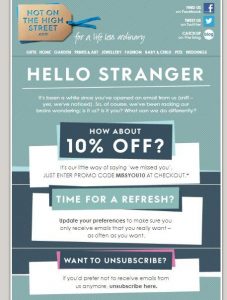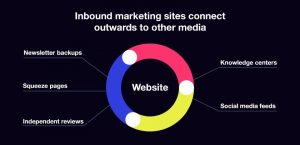For any small business to compete the modern age, it must have an agile and integrated marketing strategy that is accessible across multiple channels.
Not only this, but every ambitious SME must also develop techniques that actively generate traffic and convert leads, with 65% of firms highlighting this as their primary marketing challenge in the year 2017.
Creative thinking is key if you are to successfully distinguish your brand, however, so here are some creative marketing but ultimately effective techniques that can drive your SME forward in a competitive marketplace.
Enter the World of Podcasting
The rise of podcasting is a seminal trend in modern marketing, as this channel is becoming increasingly popular among consumers. In fact, the rate of podcast listeners grew by 23% between 2015 and 2016, and this number is set to increase incrementally over time.
This is now becoming a mainstream channel through which to target customer segments, while it also provides a diverse platform that can reach a potentially large number of demographics.
Just be warned; listeners tend to prefer conversational and interactive podcasts that are genuinely engaging, so you will need to ensure that your content has a natural hook which frames your calls-to-action and delivers an expert voice to target consumers.
Thrive on the Back of Long-tail Keywords
Generating traffic on the back of keyword searches form the backbone of any online marketing campaign, but with more than 100 billion searches performed on Google each month it is increasingly difficult to remain competitive while using generic, short-tail keywords alone.
Interestingly, long-tail keywords offer additional value to brands due to their specific and highly targeted nature. They can, therefore, be used as part of an informed and more creative marketing strategy, while tools such Google Instant Search can be utilized to help you determine viable keywords for your proposition.
Use Social Tools to Track Consumer Engagement
For years after the emergence of social media, businesses were forced to rely on one-dimensional metrics such as like and follows to determine the popularity of their brand and its core message.
While likes, follows and even shares are all well and good, they do little to highlight or measure the online standing of your SME. Instead, it is better to determine metrics which gauge the levels of consumer engagement associated with your brand, with a number of new tools now available to help you achieve this aim.
There are multiple advanced analytics tools which track engagement and calculate an estimated ROI.
Use Data to Influence Rather Than Drive Marketing Decisions
While big data is fast emerging as a considerable influence in the field of marketing, it is important that SMEs do not become over-reliant on it. After all, you may lack the resources to invest in truly sophisticated data collation and analytical tools, while it is important to note that the information which you garner is not always accurate.
In this respect, data should be used to influence rather than dictate your marketing decisions, as you look to combine information-born insights with your own industry knowledge and experience. This creates balanced campaigns that deliver the best results, while also reducing your cost base and overall marketing spend.
The same principle can be applied to any marketing discipline, and an integrated strategy can help to ensure that you are not reliant on one particular channel.
Reuse and Repurpose Content Where Appropriate
Creating insightful and unique content is central to your marketing efforts, but this is also a challenging and time-consuming pastime. It therefore makes sense to reuse and repurpose engaging content where possible, ensuring that it is accessed by as large an audience as possible.
If you have a blog post that has generated significant traffic, for example, why not repurpose this as a video, share this on YouTube and embed the content on your own website. Similarly, webinar recordings can be transformed into informative or humorous podcasts, and shared within the social space.
If you have old content that has underperformed on your blog, you may also want to consider re-optimising this by reviewing its length, quality and application of keywords. Try to focus on posts that have retained topical relevance, however, and remember to share your edited content across your social network.
Remember, the ultimate idea is to create versions of your content in other formats while adding value. For example, a podcast could become a blog post and a slideshow could become an infographic, so long as the end result offers value to readers.
Business & Finance Articles on Business 2 Community(71)







